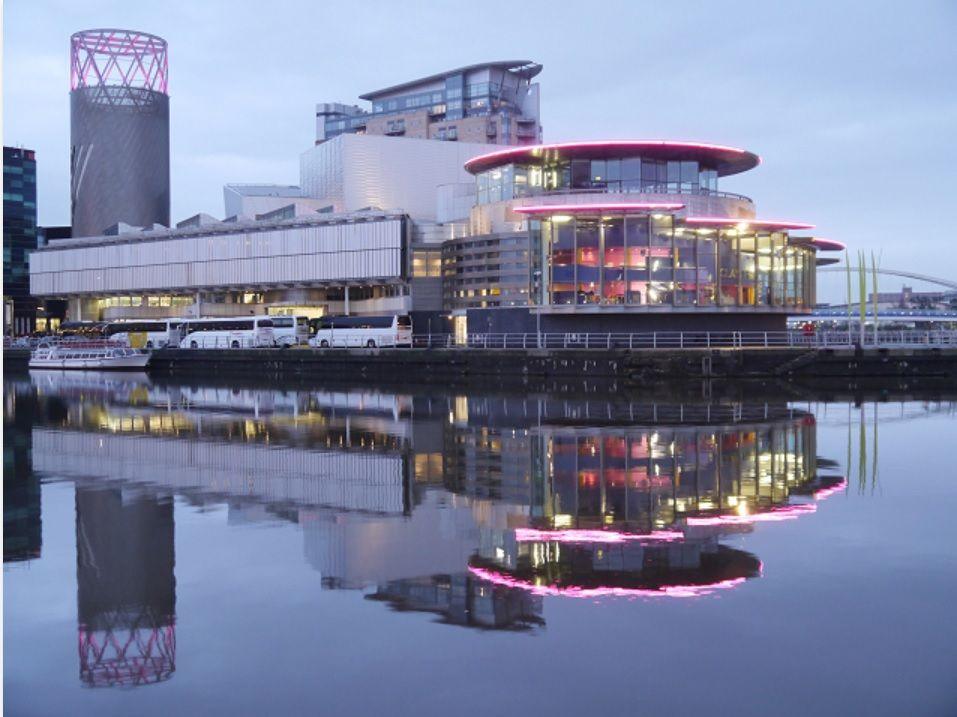Forgotten racecourse revealed in Victorian images
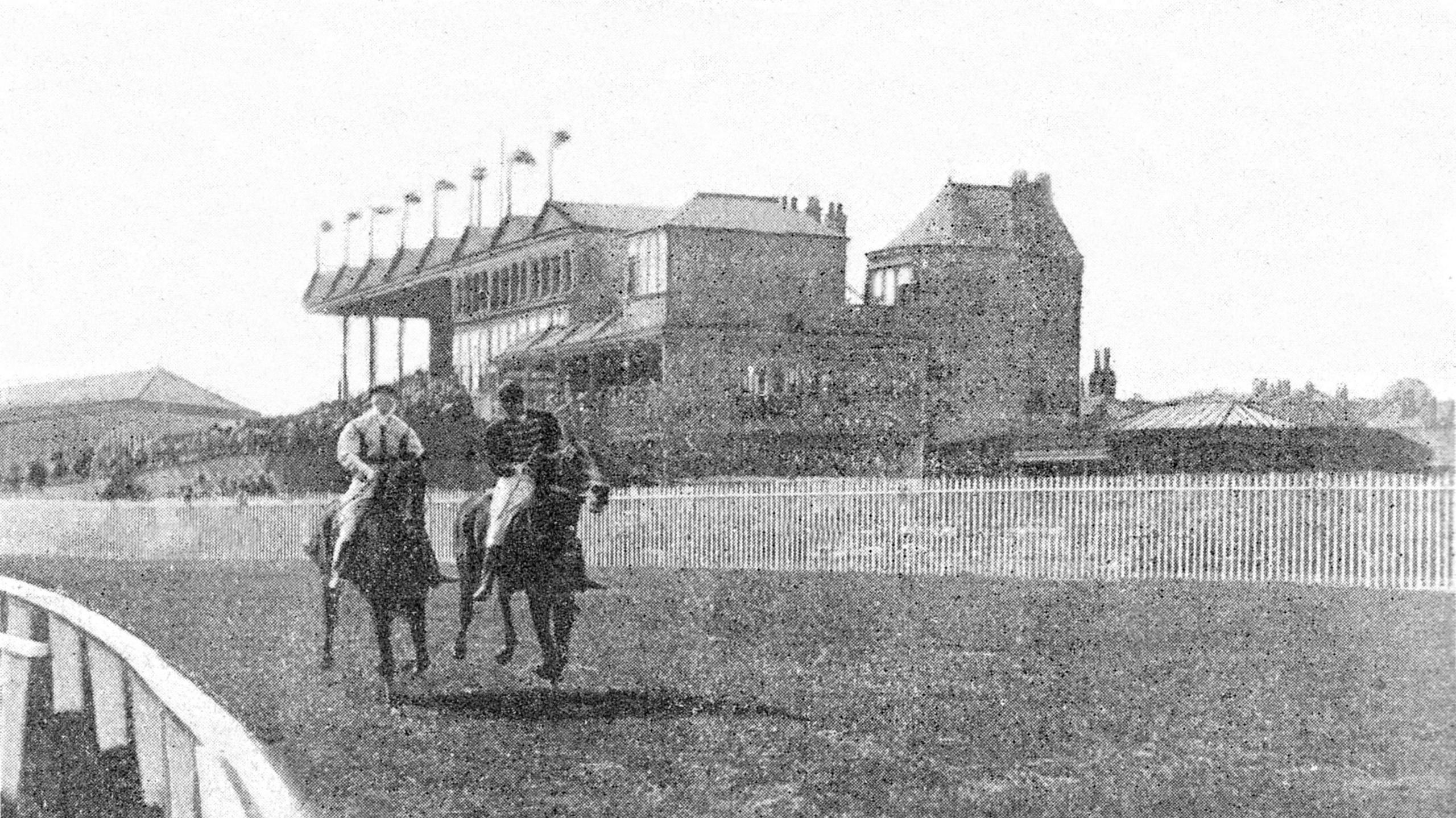
New Barns was one of three sites used by the Manchester Racecourse Company - none of which lay within the city's boundaries
- Published
Evocative Victorian images unearthed by the BBC reveal how Salford was home to a racecourse before the land was converted into a dockyard and now the modern urban landscape known as MediaCityUK.
New Barns Racecourse, 1.5 miles (2.4km) in length, opened in 1868 and entertained racing fans for 34 years before it made way for a new dock.
Maps show that the home straight and grandstands are now occupied by the Ashton-Eccles Metrolink line which runs through Harbour City.
The long-forgotten course's paddock and winning post were located where the curve of the tramline heading towards Anchorage now stands.
Demolition of the racecourse began after a six-year legal dispute between the Manchester Racecourse Company and the Manchester Ship Canal Company.
In 1905, Dock 9 - which split the abandoned racecourse in two - was opened by King Edward VII.
Salford Quays' lost racecourse
Hidden Manchester
9 November 2025
Nick Ransom speaks to sports historian Sam Oldfield and local tour guide Mark Charnley about the forgotten New Barns Racecourse
"New Barns would have been a central hub to the community, said Dr Sam Oldfield, a sports historian from Manchester Metropolitan University.
"In terms of sport, athletics [was] very popular and there are multiple examples of New Barns hosting athletic competitions."
The crisis-hit Salford Red Devils once played on a field located behind the main grandstand for more than 30 years.
The rugby league side moved to The Willows in 1901 where they remained for 111 years until relocating to the Salford Community Stadium.
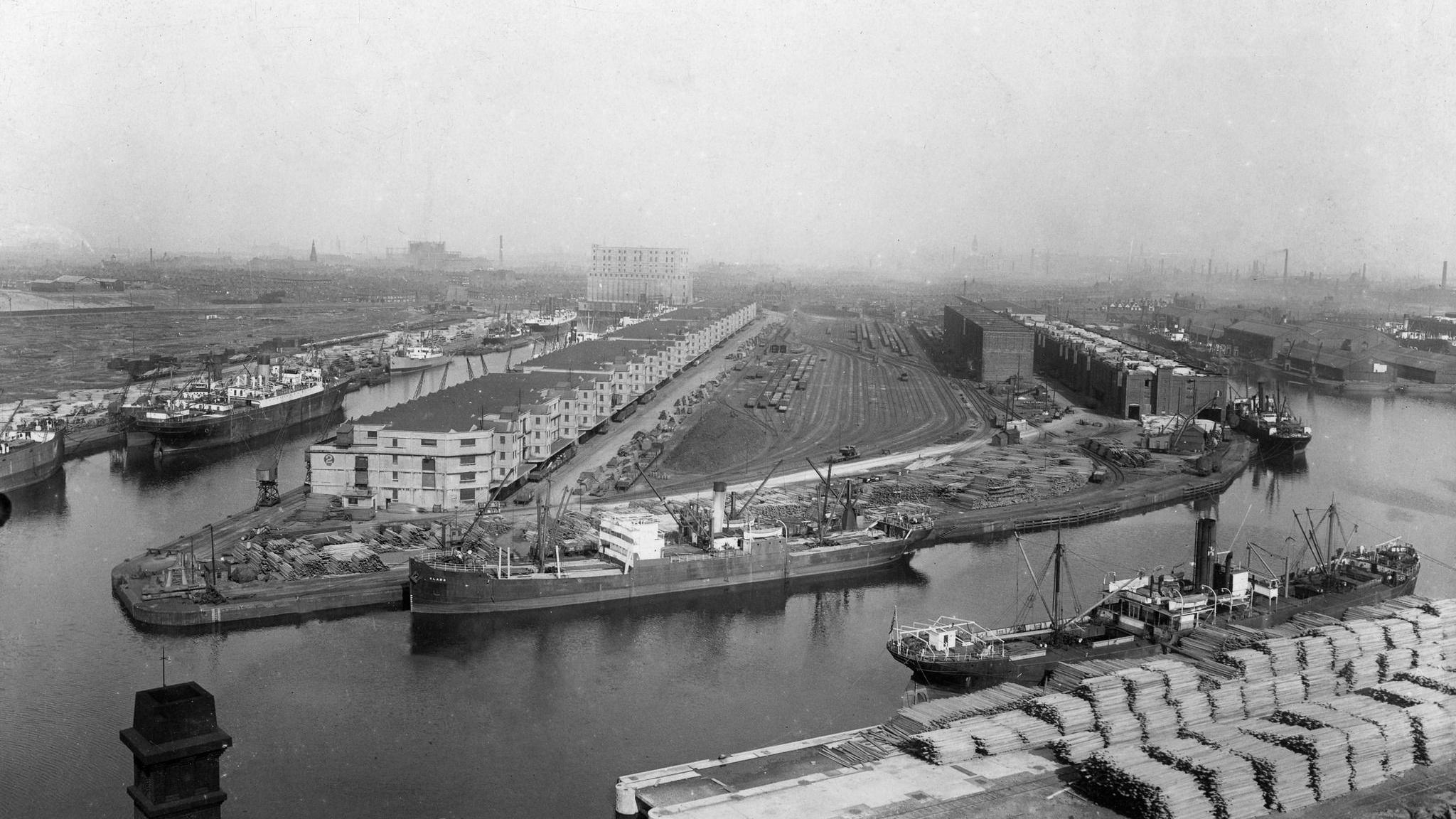
The Lowry Theatre and a cocktail bar now sit at what was the southern corner of the racetrack
Racing enthusiast and author William Morgan described New Barns as "a good gallop".
As well as hosting rugby, cycling and other sports, the area was also used for markets, public events and political rallies.
Dr Oldfield explained: "In 1895, because of prolonged frost that distressed the whole of Manchester and Salford, the racecourse was used as a soup kitchen for local residents.
"A very vivid carnival-like experience" hosted temporary marquees, tents and huts, serving food and drinks."
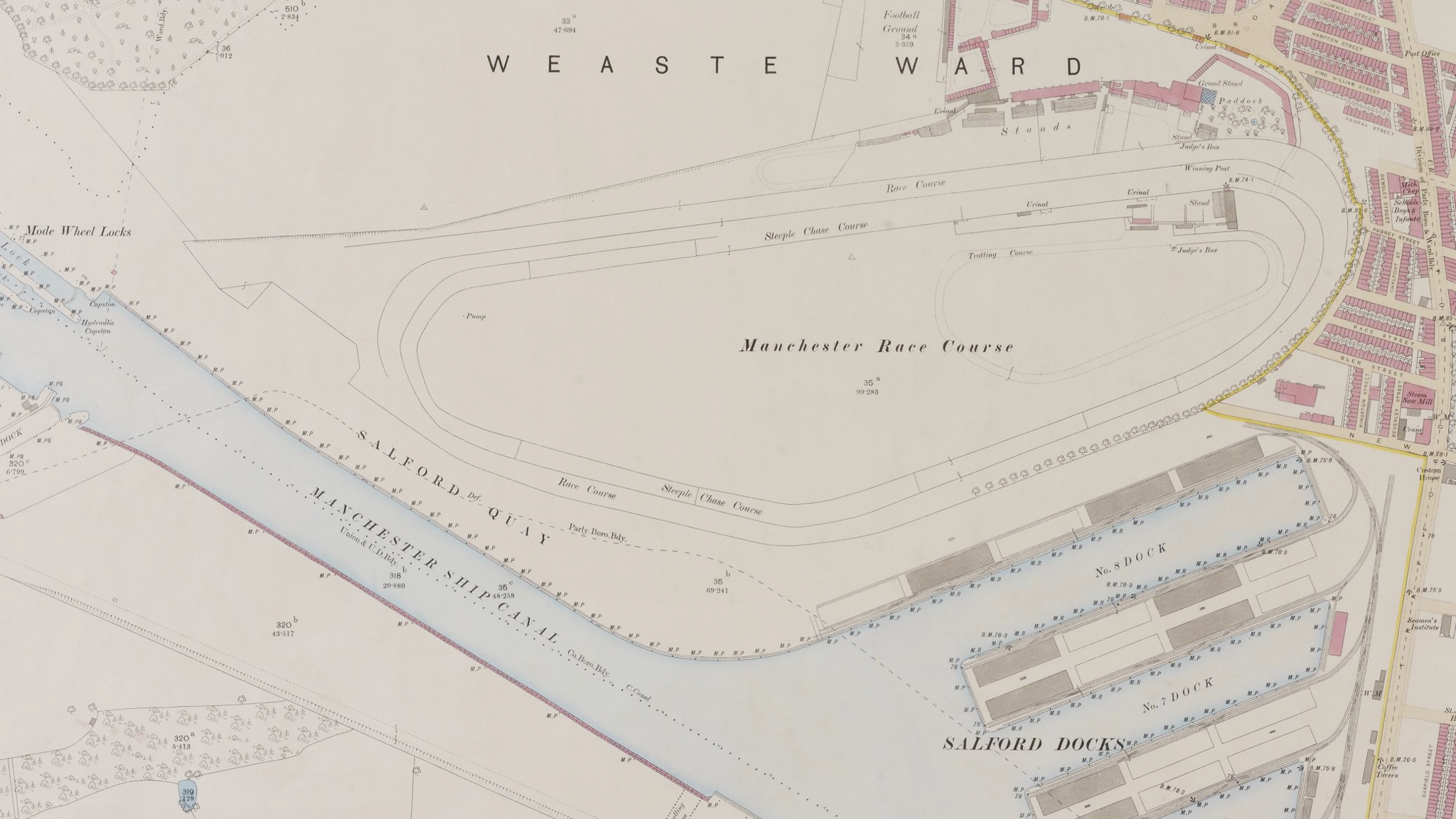
MediaCityUK now sits on the western corner of the course, shown in this 1896 map
Overcrowding was regularly reported on race days.
To prevent a crush in the summer of 1876, for example, officials opened all gates and let people in for free, after nearly 80,000 crammed into the area.
When the course opened, the Manchester Guardian noted the two stands were only designed to hold 5,500 people.
"It was noisy, colourful, the best and worst of society, all converging in one place," Dr Oldfield added.

Clothing at New Barns Racecourse reflected Victorian social order, reinforcing class divisions through fashion and appearance
In 1887, American entertainer William Cody - better known as Buffalo Bill - brought 180 wild horses, 18 buffalo and 97 Native Americans to the area.
The showman performed nightly for five months to packed-out crowds.
He would have scarcely believed that, 120 years later, the site would have turned into MediaCityUK - full of apartment blocks, offices, bars, restaurants and a university campus.
There were no hotels in the area at the time - Cody's travelling company camped on the freezing banks of the nearby River Irwell.
The course hosted major races including the November Handicap, now run at Doncaster, and the Lancashire Plate, first held in 1888.
The Lancashire Plate was the most lucrative race in Britain at the time, with a prize of £11,000.
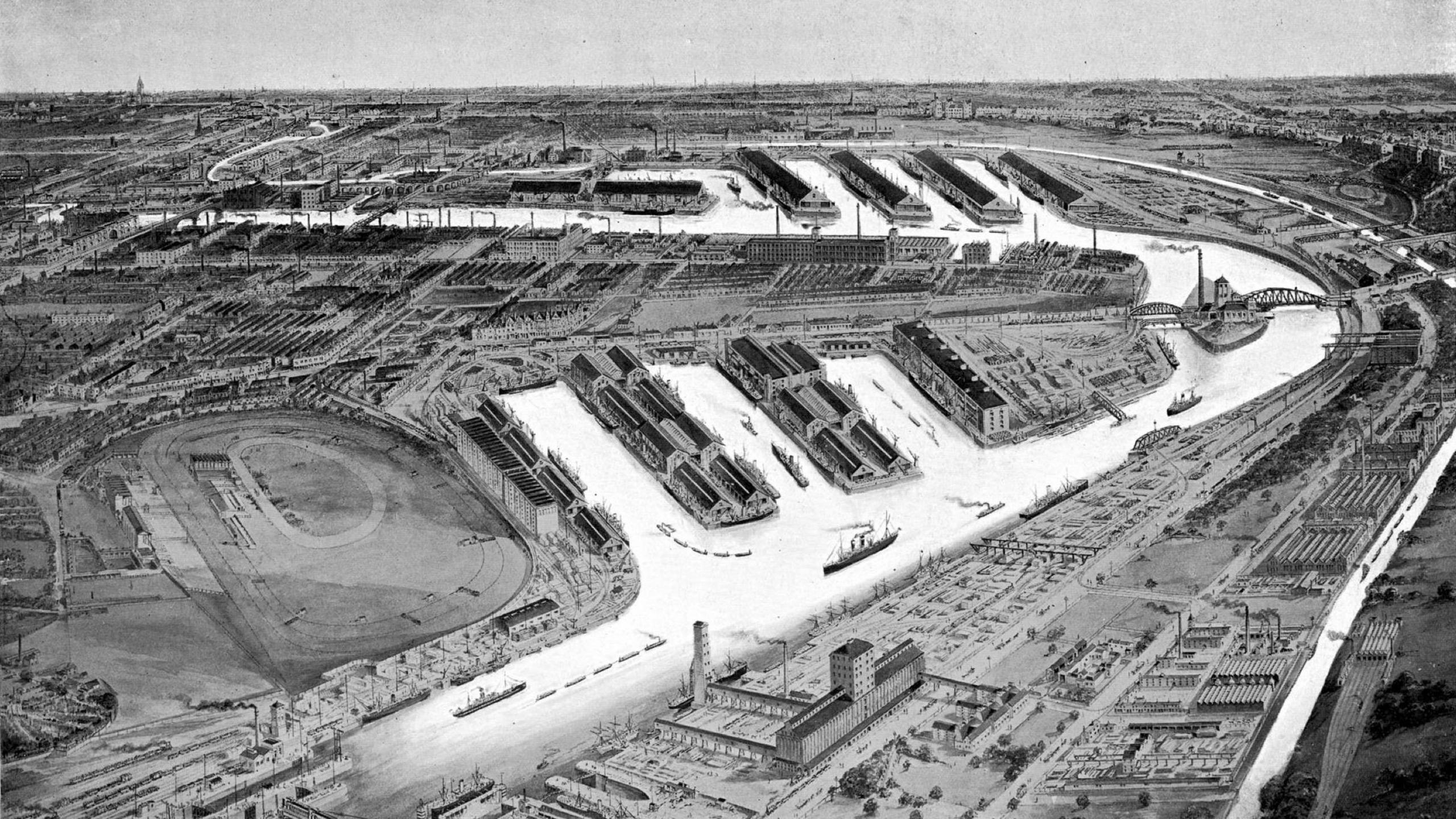
This 1898 illustration shows the area before a ninth dock, now adjacent to MediaCityUK, divided the racecourse
Just over a decade before the course closed, its owners launched legal action after being informed that their land would be taken for the expansion of the Manchester Ship Canal.
Sports historian Dr Oldfield said the owners "were not happy with being told what to do with their estate.
"You've got this tension of a sport trying to grow and you've got an industrial, commercial world growing."
Following the lawsuit, the course owners received £250,000 for the land (about £27m in today's prices), more than six times the amount they paid to relocate from New Barns back to their original site at Castle Irwell.
Dr Oldfield remarked: "I don't think in the end they were too upset!"

Plans for MediaCityUK were inspired by waterfronts such as Oslo in Norway and Australia's Darling Harbour
Plans were announced in 2024 to further rejuvenate the MediaCityUK area.
Some councillors advised caution, warning the area risked becoming a "concrete jungle".
Labour councillor Jake Rowland said two parks remained within "a short walk" for most residents.
Local tour guide Mark Charnley feels there could be more green space.
Reflecting on the evolution of the site from fields to modern media hub, Mr Charnley said: "There are lots of places to sit, but not a lot of grassland. Most of the space is concrete.
"The course has just been forgotten. Nobody alive today would remember it."
"It's quite remarkable the changes. You wouldn't recognise it."
Get in touch
Tell us which stories we should cover in Greater Manchester
Listen to the best of BBC Radio Manchester on Sounds and follow BBC Manchester on Facebook, external, X, external, and Instagram, external. You can also send story ideas via Whatsapp to 0808 100 2230.
Related topics
- Published26 April
